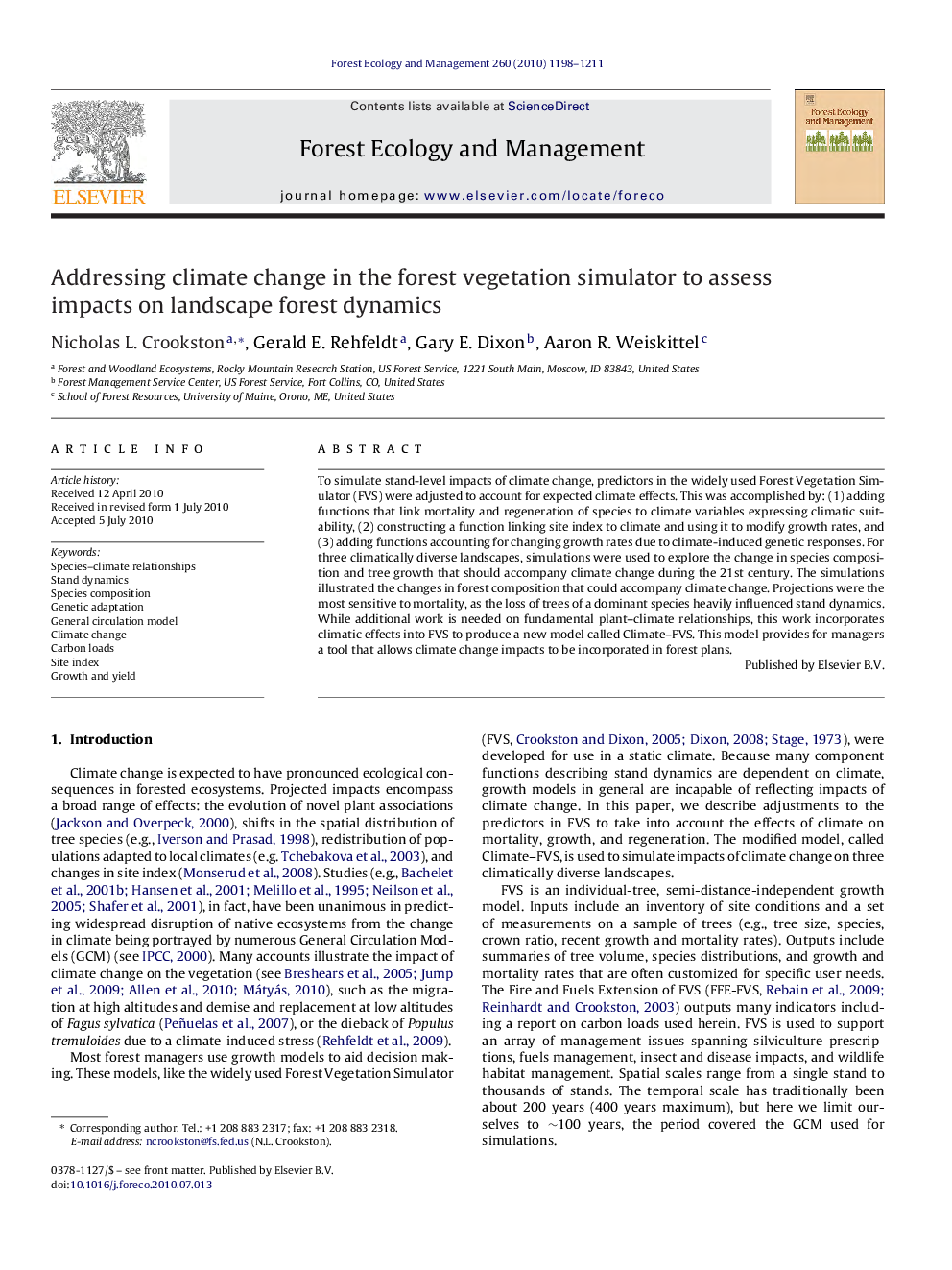| Article ID | Journal | Published Year | Pages | File Type |
|---|---|---|---|---|
| 88114 | Forest Ecology and Management | 2010 | 14 Pages |
To simulate stand-level impacts of climate change, predictors in the widely used Forest Vegetation Simulator (FVS) were adjusted to account for expected climate effects. This was accomplished by: (1) adding functions that link mortality and regeneration of species to climate variables expressing climatic suitability, (2) constructing a function linking site index to climate and using it to modify growth rates, and (3) adding functions accounting for changing growth rates due to climate-induced genetic responses. For three climatically diverse landscapes, simulations were used to explore the change in species composition and tree growth that should accompany climate change during the 21st century. The simulations illustrated the changes in forest composition that could accompany climate change. Projections were the most sensitive to mortality, as the loss of trees of a dominant species heavily influenced stand dynamics. While additional work is needed on fundamental plant–climate relationships, this work incorporates climatic effects into FVS to produce a new model called Climate–FVS. This model provides for managers a tool that allows climate change impacts to be incorporated in forest plans.
